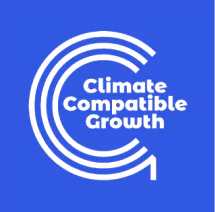The Open Learn Collection is created by the Climate Compatible Growth Programme and a number of international organisations and universities, who are part of the OpTIMUS community.
Introduction
The OpenLearn Collection acts as the starting level for capacity building in energy modelling tools and approaches. The self-administered courses are split in two parts, covering both the underlying theory and the use of the associated tool. Courses themselves are composed of modules, which contain:
- detailed lecture slides or webpages explaining the theory behind the tools,
- hands-on exercises for learning how to use the tools,
- an assessment process through self-administered quizzes,
- and a certificate on successful completion.
Course Facts
- Self-administered courses, can be completed from anywhere
- 19 Courses available (with 6 available in Spanish, 3 in French, and 5 in Portuguese)
- Over 400,000 course downloads
- Over 4,500 certificates awarded
- Courses typically take 20 hours to complete
- For some courses, a Bronze LinkedIn Badge can be earnt
The OpenLearn Collection provides all the necessary materials for anyone to learn how to use the various tools to address the fundamentals of planning and finance for climate compatible growth. These fundamentals include:
- Setting up basic energy (and by implication key greenhouse gas) statistics
- Understanding energy supply and demand investments. (Where demand includes sectors such as transport and industry (of all sectors) to support growth
- Producing roadmaps for electrifying households (to enable access to health, education, clean cooking, and other development services)
- Understanding cross-sectoral impacts and interdependencies or resource use, infrastructure, and supply chains
- Conducting financial appraisal of new transport and energy infrastructure, as well as estimating compensation associated with early withdrawal of fossil fuel plants
The links to the various courses are provided at the bottom of the page.
For guidance on how to access the courses, see the following video:
OpenLearn Create
English Language Courses
(Windows) In this course, participants will learn about geospatial energy modelling in the tools Open Source Spatial Electrification Tool (OnSSET) and World Bank’s Global Electrification Platform.
(Windows version) Participants will learn to use energy modelling tools to understand the investments needed to meet growing energy demands alongside environmental and energy security constraints, while assessing system flexibility to account for high renewables penetration.
(Mac OS version) Participants will learn to use energy modelling tools to understand the investments needed to meet growing energy demands alongside environmental and energy security constraints, while assessing system flexibility to account for high renewables penetration.
(Windows) FINPLAN: Financial modelling to support the planning of energy projects that achieve sustainable development outcomes.
(Windows) This course will teach participants how to use the International Atomic Energy Agency (IAEA) modelling tool called the Energy Balance Studio (EBS). Participants will learn the theory behind energy balances, and how to use the EBS tool to construct energy balances.
(Windows) This course will teach you how to use the International Atomic Energy Agency (IAEA) modelling tool for energy balance creations.
(Windows) An introduction to integrated modelling of Climate, Land, Energy and Water systems for sustainable development policy.
(Windows) This course is centred around the role that infrastructure systems play in enabling climate-compatible and sustainable development in an uncertain future, providing the latest science and tools in this field.
(Windows) This course will help participants understand the types of investments that could be made to ensure a sustainable and secure energy system from a global or national perspective using an agent-based methodology.
(Windows) This course will help participants understand the relationship between energy systems modelling and policymaking, and introduce the concept of political economy analysis.
(Windows) The main goal of the course is to introduce you to the fundamentals of quantitative impact assessment methods and models. These quantitative models are specifically designed to assess the prospective environmental and economic impacts resulting from the application of technological or policy interventions at meso and macro-scale.
(Windows) In this course you will be introduced to OnStove, an open-source spatial clean cooking tool identifying the best cooking solutions across any given area based on their costsand benefits.
(Windows) An introduction to geospatial data management through GIS software, SDI design principles and data governance good practice.
(Windows) Participants will learn to identify high-priority areas where energy access can be expanded using multi-criteria decision analysis on the Energy Access Explorer platform.
(Windows) This course will offer a practical guide to help your country navigate through the complex journey of the electricity transition.
(Windows) Explore the computational aspects of energy system modelling, delve into the technological components of third-generation minigrids, and discover MicroGridsPy, an open-source Python framework for optimal sizing of minigrids.
(New Course for Windows and Mac OS!) This course provides participants with the skills to assess the financial viability of energy transition investments, using financial modelling tools. It features MINFin, a model for identifying climate finance gaps, as well as FinTrack and FinCoRE, tools for tracking funding sources and estimating renewable energy costs.
(New Course!) (Windows) An introduction to sustainable transport transitions within the Data-to-Deal (D2D) framework, combining theory, modelling techniques, and financing strategies for low- and middle-income countries.
(New Course!) (Windows) This course provides a comprehensive introduction to energy system modelling using OSeMOSYS, a linear programming optimisation tool for long- term energy planning and policy analysis. It demonstrates the Modelling User Interface for OSeMOSYS (MUIO)
Versión en Español
En este curso, los participantes aprenderán sobre la modelización geoespacial de la energía en las herramientas Open Source Spatial Electrification Tool (OnSSET) y Global Electrification Platform del Banco Mundial.
(versión WINDOWS) Los participantes aprenderán a utilizar herramientas de modelización energética para comprender las inversiones necesarias para satisfacer la creciente demanda de energía, considerando las limitaciones medioambientales y de seguridad energética, y evaluando la flexibilidad del sistema para integrar una alta penetración de energías renovables.
(versión Mac OS) Los participantes aprenderán a utilizar herramientas de modelización energética para comprender las inversiones necesarias para satisfacer la creciente demanda de energía, considerando las limitaciones medioambientales y de seguridad energética, y evaluando la flexibilidad del sistema para integrar una alta penetración de energías renovables.
Modelización financiera para apoyar la planificación de proyectos energéticos que logren resultados de desarrollo sostenible.
En este curso, los participantes aprenderán a analizar el sistema energético y a utilizar dos de las herramientas de modelización del OIEA: Energy Balance Studio y el Modelo de Análisis de la Demanda Energética.
Introducción a la modelización integrada de los sistemas de clima, tierra, energía y agua para la política de desarrollo sostenible.
Versions des cours en français
Dans ce cours, les participants apprendront à modéliser l'énergie géospatiale à l'aide des outils Open Source Spatial Electrification Tool (OnSSET) et Global Electrification Platform de la Banque mondiale.
Dans ce cours, les participants apprendront à modéliser l'énergie géospatiale à l'aide des outils Open Source Spatial Electrification Tool (OnSSET) et Global Electrification Platform de la Banque mondiale.
Les participants apprendront à utiliser des outils de modélisation énergétique pour comprendre les investissements nécessaires afin de répondre à la demande croissante, tout en tenant compte des contraintes environnementales et de sécurité énergétique, et en évaluant la flexibilité du système pour intégrer une forte part d’énergies renouvelables.
FINPLAN : Modélisation financière visant à soutenir la planification de projets énergétiques permettant d'obtenir des résultats en matière de développement durable.
Introduction à la modélisation intégrée des systèmes climatiques, terrestres, énergétiques et hydriques pour une politique de développement durable.
Meet the CCG OpenLearn Create Team


Partners
The tracks have been developed in partnership with the following organisations:
- UN Department of Economic and Social Affairs
- International Atomic Energy Agency
- International Renewable Energy Agency
- United Nations Development Programme
- The World Bank Group
- OpTIMUS Community of practice
- Imperial College London
- Simon Fraser University
- University of Oxford
- ESMAP (Energy Sector Management Assistance Program)
- KTH Royal Institute of Technology
- Loughborough University
- The Open University
